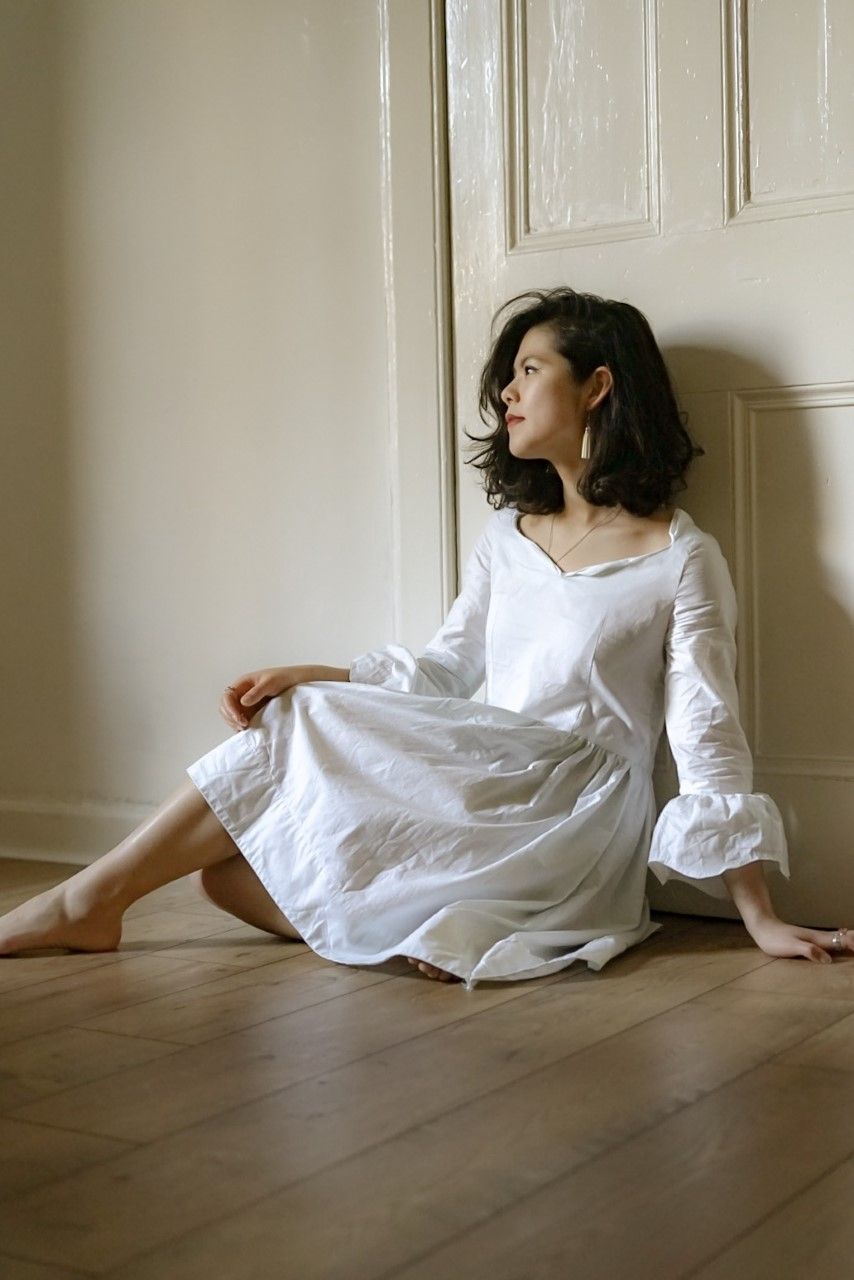Upcycling: the new recycling?

We hear from Erika Lau, a third-year Biological Sciences student who is passionate about reusing materials, or “upcycling” for our final blog post for #FashionRevolutionWeek.
I grew up in Shanghai, where it was commonplace for whole days of school to be cancelled due to air pollution levels. Since moving out of Shanghai, I’ve been trying to reduce my own carbon footprint, as I don’t want my future children growing up in the same environment I did. I’ve become increasingly aware of the textile problem we have in an increasingly consumerist society. This has all led to me adopting upcycling as my creative outlet.
Wear, Donate, Upcycle
I believe a piece of clothing has three lives. The first life begins when it is purchased off the rail of a shop. The second, when it is sold online or donated to a charity shop and re-homed. My peers have shared with you tips and tricks on how to shop second hand. After all, one man’s trash is another man’s treasure. Now, what happens when a clothing item is in a condition that it can no longer be repurchased? This is when it enters its third life.
Let me introduce to you the concept of upcycling.
What is upcycling?
Upcycling is the act of converting an old or broken item into something useful or beautiful. I guess the saying “finding the beauty in the mundane” fits really well with this concept. Upcycling has been around for ages. In the 1930s, when families were often short of resources, they had to reuse and repurpose everything. I’m sure many of our grandparents are huge upcyclers. My earliest memory consists of watching my grandmother sew coin pouches out of duvet covers.
Why is upcycling so important?
Even though unwanted clothes are often donated to charity shops, only about 20-30% of these clothes are actually re-sold. The majority ends up as discarded trash, piling up in landfills. Additionally, secondhand clothing has driven down in value in the past two decades, as charity shops that were once filled with vintage and iconic gems are now stocked up with cheap and basic junk. With upcycling, we can divert about 85% of textiles that end up in landfills.
Ethical fashion brands that upcycle
In this generation, eco-fashion brands have stolen the spotlight. Brands like Reformation and ASOS Reclaimed Vintage promote sustainability by repurposing vintage clothing and rescuing fabric from fashion houses. Given the prices of these brands, they may not always be within our affordable range. Regardless, these brands exist to inspire and encourage us to upcycle.
Now, what can you do?
The Internet is filled with tutorials that can guide you through upcycling your clothes into more fashionable items. I suggest scrolling through Pinterest and YouTube for ideas. However, there are three of my favourite upcycling projects.
1. Reusable cloth menstrual pads
90% of a single pad is plastic. An average woman uses and throws out more than 10,000 of these in her lifetime. So, if you think about it, that’s a lot of plastic going to landfills. Acknowledgement of the environmental impact of disposable sanitary items has led to the rise of eco-friendly alternatives, such as the cloth menstrual pad. Cloth pads are reusable and washable. I know every individual has their own preference when it comes to sanitary products, but what is so great about cloth menstrual pads is that they can easily be sewn together with items that you already own! I use old cotton flannels, towels, fleece jumpers and umbrellas to make my own pads. Watch my video tutorial.

Erika’s DIY menstrual pads
2. Braided t-shirt rug
This is my all-time favourite upcycling project. I love making circular braided rugs out of t-shirt yarn. T-shirt yarn is essentially t-shirts that are cut into strips. Online tutorials vary, as some require sewing for extra sturdiness while others just require braiding. I use this one. Additionally, if you are short on time, you can use the same method to braid a coaster or a placemat!

3. Bed sheet garments
Lastly, I have a project for all the ambitious tailors out there! You can transform any old bed sheet into a clothing item. These projects work well with bed sheets that have stubborn stains or don’t fit your bedroom aesthetics anymore. I was lucky to have a friend teach me how to transform my old bed sheet into a dress. I’m sure this would work well for shirts as well. Sewing patterns are all over the Internet, so use them to your advantage.

Erika in a dress made from an upcycled bedsheet.
Happy upcycling!
Watch Erika’s tutorial on making a reusable menstrual pad
https://www.youtube.com/watch?v=QIbnZB1uhmQ&feature=youtu.be





Recent comments